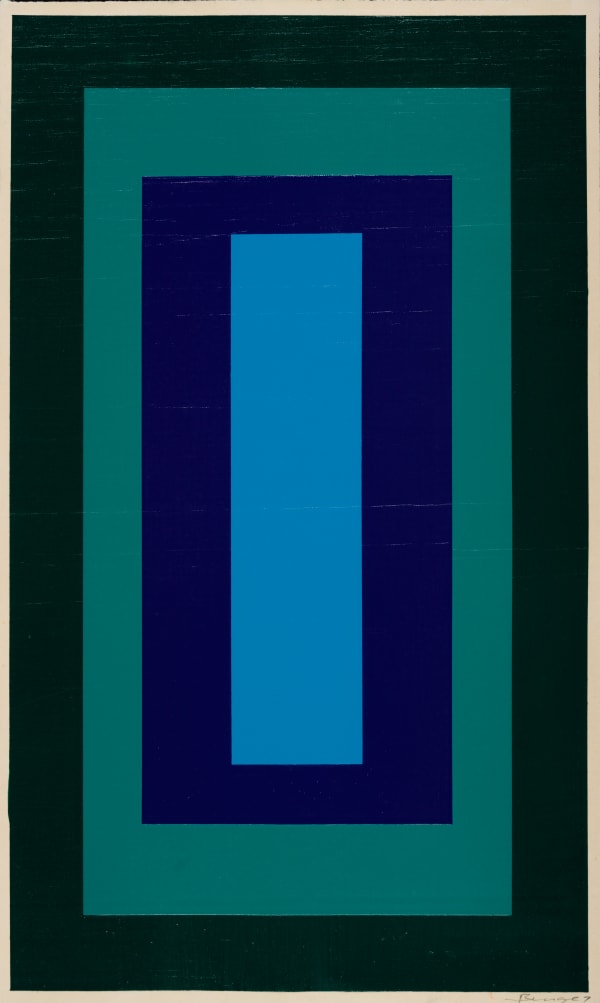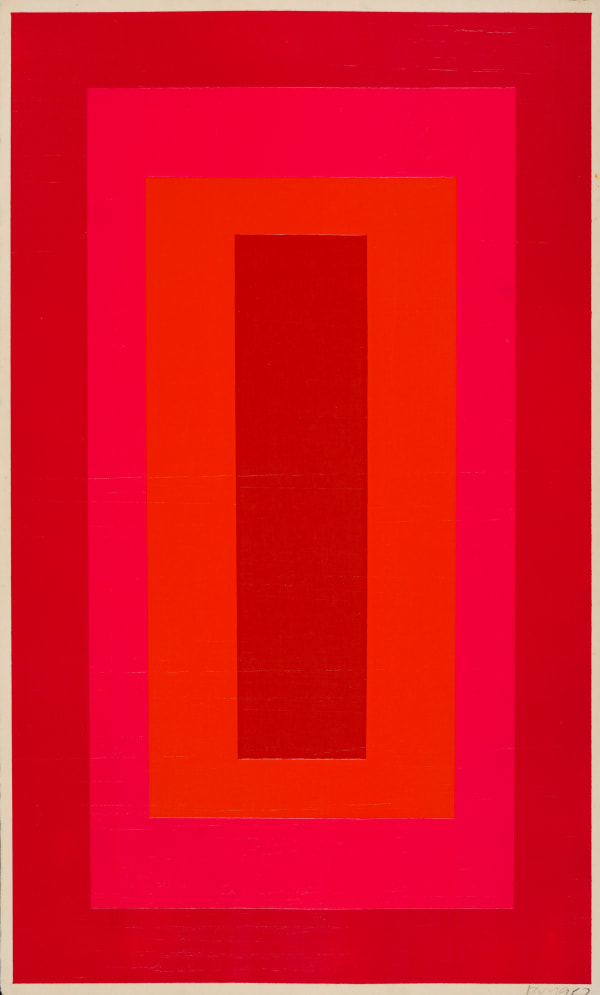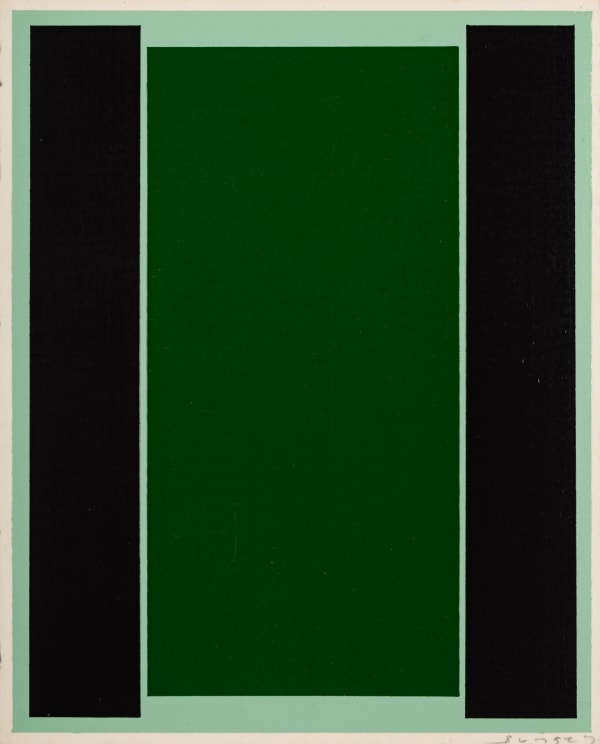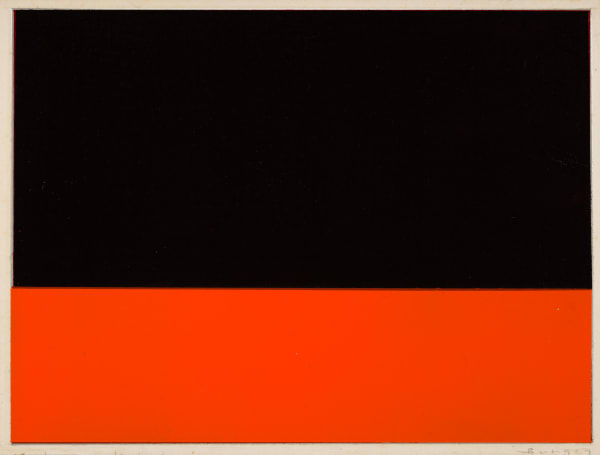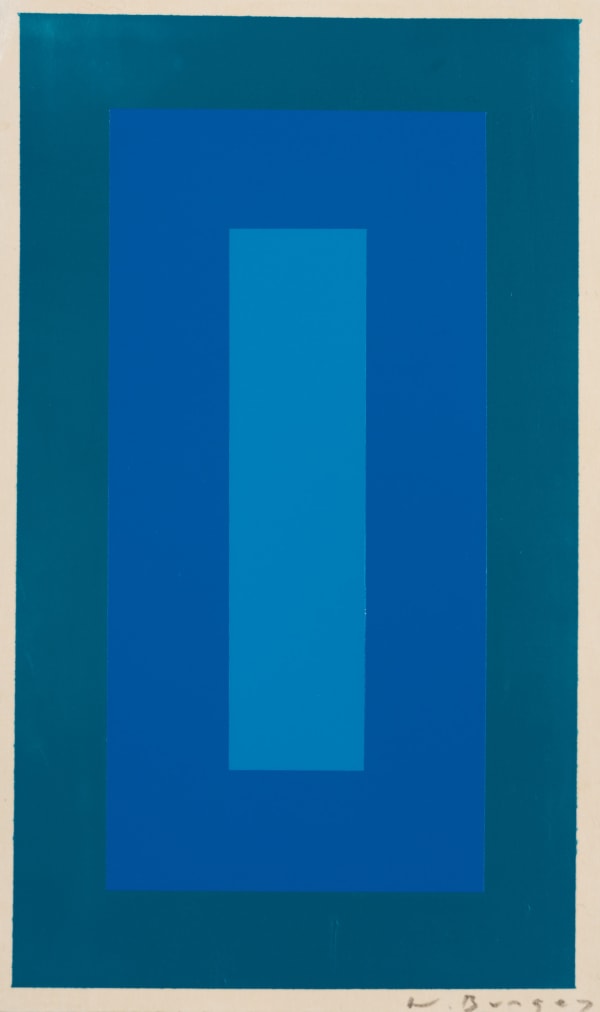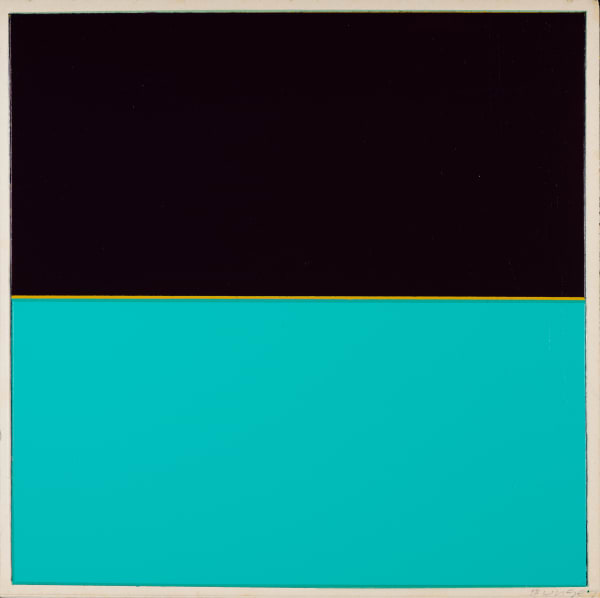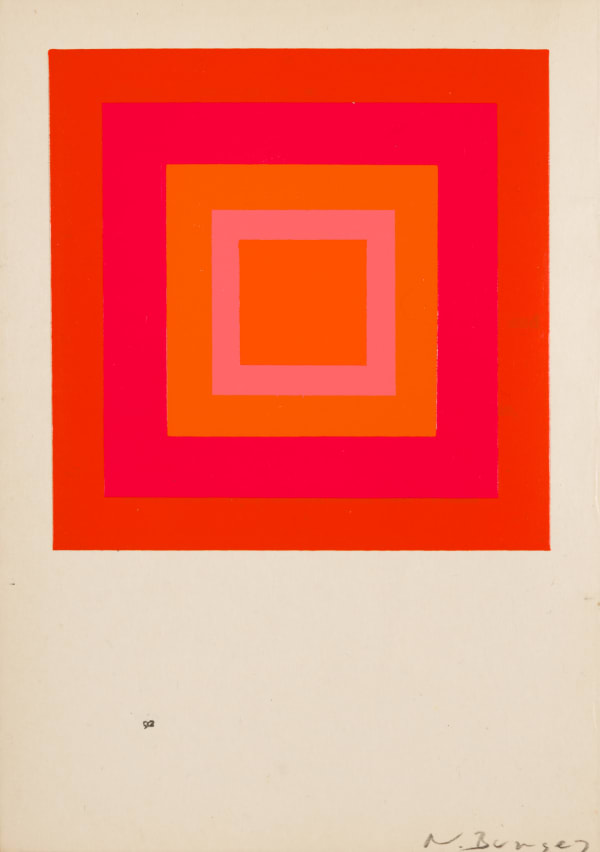In addition to our artists page, here, we have created this Viewing Room in order to classify Nici Bungey's artworks by size. Particularly striking when presented in groups, here are some powerful pairings.
-
Acrylic on Japanese Paper - 42.5 x 25.8 cm
-
Acrylic on Book Page 22.2 x 18 cm
-
Acrylic on Book Page - 20 x 26.2 cm
-
Acrylic on Japanese paper 21.5 x 13 cm
-
Acrylic on Book Page 22 x 22 cm
-
Acrylic on Book Page - 20.5 x 14.7 cm
-

Quadrant
Nici Bungey (b.1967) has an astonishing instinct for both colour and form. In her work the importance of form is specifically concerned with the use and creation of space. Using proportion as her master and colour as her guide, she creates artworks that consist of layers of heat pressed paint. Her work is an ongoing intuitive enquiry, a never-ending series of experiments of infinite variation, inspired by the immediate events in her life. This series of paintings was made during the lockdown year of 2020-21, when Bungey walked in the South Downs National Park every day, observing the changes in mood of the landscape. As the seasons and light change, Bungey’s response to the mood corresponds. In these artworks, alternate juxtapositions of similar or divergent tones elicit disparate emotional responses. Artists absorbed by colour tend to be expressing mood, as with Mark Rothko (1903-1970) or Piet Mondrian (1872-1944).
While Bungey firmly occupies her own territory of exploration, and is not specifically influenced by particular artists, it is impossible to view this work and separate it from the history of colour field painting. Colour field painting emerged in New York City during the 1940s and 1950s, inspired by European modernism and was closely related to abstract expressionism. Many of its notable early proponents were among the pioneering abstract expressionists. Colour field is characterised primarily by large fields of flat, solid colour spread across or stained into the canvas creating areas of unbroken surface and a flat picture plane. The movement places less emphasis on gesture, brushstrokes and action in favour of an overall consistency of form and process. In colour field painting "colour is freed from objective context and becomes the subject in itself." Josef Albers (1888-1976) who is influential for his work on colour theory, was an early proponent who observed that colour is relative and changes in relationship to colours around it.
An early, and important, influence on what has become a career long study of colour for Bungey, was her tutor Moritz Zwimpfer at the Basel School of Design in Switzerland where she studied from 1991 – 1993. Her graphic design training in London (LCC, University of the Arts, London 1993 - 1996) influenced her understanding of space. It was an MA in Textiles at Winchester School of Art in 2010 that was the last defining factor in developing the technical understanding that informs Bungey’s practice today. Bungey has developed a unique technique that involves pressing one layer of paint, on another, on another, while maintaining unbroken decisive lines, and unbelievably sustaining a flat surface. The surface inhabits a slight texture, impressions from the waxed sleeve used in the pressing. In this texture is the history of hundreds of previous works, small marks inherited from earlier pressings. These artworks have a precision that is astonishing, while sustaining an organic quality connected with their making, and a sophistication of colour and form, which make them truly noteworthy.
German, born 1967
Lives and works in the UK
